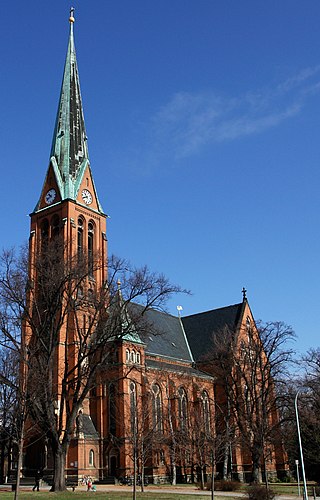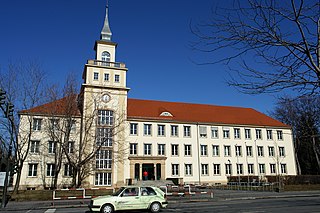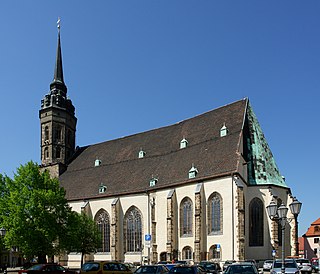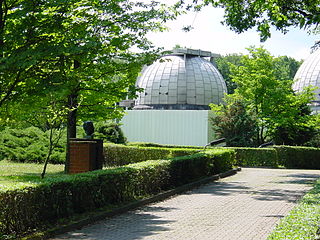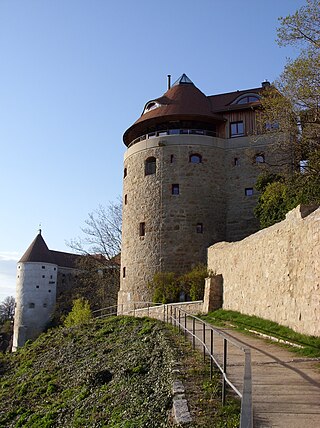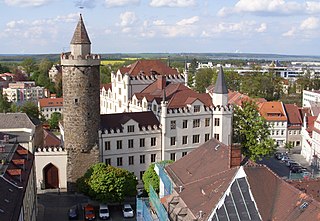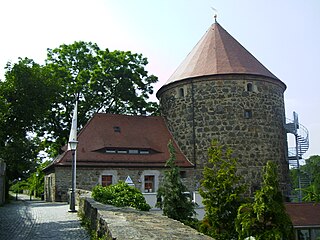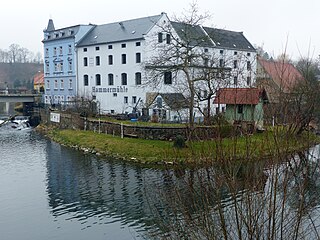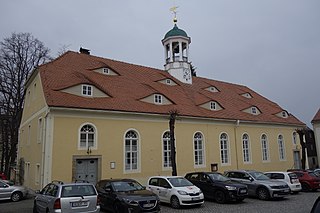18 Sights in Bautzen, Germany (with Map and Images)
Legend
Welcome to your journey through the most beautiful sights in Bautzen, Germany! Whether you want to discover the city's historical treasures or experience its modern highlights, you'll find everything your heart desires here. Be inspired by our selection and plan your unforgettable adventure in Bautzen. Dive into the diversity of this fascinating city and discover everything it has to offer.
Sightseeing Tours in Bautzen1. Gedenkstätte Bautzen
The Bautzen Memorial, Upper Sorbian Wopomnišćo Budyšin, is a place of remembrance for the victims of the two prisons Bautzen I and Bautzen II. Since 1993, it has been located in the building of the former special prison Bautzen II ("Stasi prison"), in the Bautzen district of Nordostring. The memorial is the work of the Saxon Memorials Foundation for the Remembrance of the Victims of Political Tyranny.
2. Reichenturm
The Reichenturm (Upper Sorbian: Bohata wěža) is a building of the former city fortifications of Bautzen. It is located on the eastern edge of the old town, forms the end of Reichenstraße and stands on the Kornmarkt, opposite the Liebfrauenkirche. It is open from April to October.
3. Maria-und-Martha-Kirche
The Maria and Martha Church, Upper Sorbian Cyrkej Marje a Marty, is a church of the Evangelical Lutheran parish of St. Petri in Bautzen. It is the largest exclusively Protestant church in the city, as St. Peter's Cathedral is used for both Protestant and Catholic services. The church is located outside the outer city wall in the city expansion area, which was created between 1870 and the First World War.
4. Rathaus Bautzen
The town hall of Bautzen is located between the main market and the meat market in the middle of Bautzen's old town. The construction of the first permanent council seat on this site goes back to a decree of the Bohemian King Ottokar I Přemysl, which allowed Bautzen to build "a particularly stately stone house" here.
5. Berufsakademie Bautzen
The Staatliche Studienakademie Bautzen is one of the locations of the Berufsakademie Sachsen and emerged from a polytechnic educational institution founded in 1827. Since then, more than 12,000 graduates in the business and technical fields have been prepared for the demands of the job market. A special feature of the training is the dual principle, which integrates the practical training content into the academic training. Scientific-theoretical and practical teaching content is coordinated in terms of content and organization. This combination of science and business enables students to apply the knowledge they have acquired directly in practice.
6. Friedensbrücke
The Peace Bridge in Bautzen is one of the larger stone arch bridges in Saxony and, along with the A 4 motorway bridge and the bridge of the Westtangente, one of the three most important connections for road traffic in the city crossing the Spree. The four basket arches, which are placed on massive pillars and abutments, span the deeply incised and steep-walled Spree valley at a height of over 20 metres over a length of 181 metres.
7. St. Michael Church
The Michaeliskirche in Bautzen is located near the old water art on the southwest arch of the rock spur over the Spree, on which the old town of Bautzen was built. The place between the church, the water art and the inner and outer city wall is referred to as the Wendischer Kirchhof, since the Michaeliskirche has mainly served as a church since the 17th century the Protestant Sorbs of the Bautzen area.
8. Lauenturm
The Lauenturm, Sorbian, is part of the city fortifications of the city of Bautzen. It is located on the southern edge of the old town, on the western side of the Innere Lauenstraße, which leads from the Friedensbrücke to the town hall. The tower got its name from the heraldic animal of the Kingdom of Bohemia, a lion. If you left Bautzen in the direction of Bohemia, you had to cross the Lauentor.
9. Unserer Lieben Frauen
The church of our dear wife in Bautzen is a Catholic church that is largely used by Sorbian -speaking parishioners and belongs to the cathedral parish community of St. Petri. It is located outside the former inner city wall, east of the Reichenturmes on the historic salt market.
10. Serbski dom - Haus der Sorben
The Serbski dom is an administrative building on Postplatz 2 in Bautzen, Saxony, Germany. It is the cultural and political center of the Sorbian people. It was built between 1947 and 1956. It is the seat of Domowina and the Foundation for the Sorbian People.
11. Cathedral of St Peter
St. Peter's Cathedral is an interdenominational church in Bautzen, Germany. It is among the oldest and largest simultaneum churches in Germany. Located in the heart of the city's "Old Town", the church and the square it is situated within is a major tourist attraction.
Wikipedia: Cathedral of St Peter, Bautzen (EN), Website, Website
12. Sternwarte Bautzen
The "Johannes Franz" school observatory in Bautzen is one of the largest and oldest school observatories in Germany. In many sources, it is described as the oldest German school observatory; in the meantime, it had a relatively high scientific significance for such a company.
13. Mühlbastei
The Mühlbastei, Sorbian, is one of the seven bastion towers of the city fortifications of Bautzen. The four-storey round tower was built around 1468 and got its name from the Ratsmühle, which was later built below the tower on the Spree.
14. Wendischer Turm
The Wendish Tower, Sorbian, is part of the medieval city fortifications of Bautzen. It is located on the northeastern edge of the old town and is now structurally connected to Gottfried Semper's Old Barracks. For centuries, the Via Regia ran through the adjoining Wendish Gate, which no longer exists.
15. Gerberbastei
The Gerberbastei, Sorbian, is part of the historic fortifications in the old town of Bautzen. It secured the section between the Nicolai Tower and the Schülerturm on the north side of the city and protected the crossing of the Via Regia over the Spree and the paths into the city as well as the Zwinger behind the inner city wall.
16. Hammermühle
The Bautzen hammer mill was built in 1493 by the city of Bautzen on the Spree as a wire mill, i.e. for the production of wire via wire drawing benches. In 1740, the mill was expanded to include an iron hammer mill. Today it is located north of the old town on the border with the district of Seidau and is at the same time a mill, oil mill and mustard mill.
17. Nicolaifriedhof
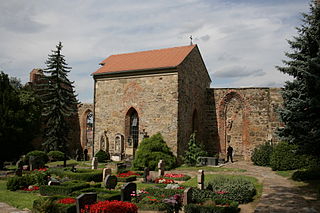
The Nikolaifriedhof is a Roman Catholic cemetery in Bautzen's old town, which has existed since 1455. It is located in the ruins of the former Uhyster Church and its surroundings in front of the Mückaer Tor on the northern edge of the old town, high above the Spree and not far from Bautzen Castle. The church itself was destroyed in the Thirty Years' War during the siege of Bautzen by the Saxon army in 1620. Since 1745, the ruins themselves have also been used as a cemetery. Since 1852, there has been a small chapel at the Nikolaifriedhof for dull evenings and funeral services.
18. Evangelische Brüdergemeine Kleinwelka
The prayer hall of the Moravian Brethren is a place of worship of the Moravian Church in the Kleinwelka district of the city of Bautzen in the district of Bautzen in Saxon Upper Lusatia. The building was built in 1758 in the course of the establishment of the Kleinwelka colony and is also a listed building as an individual part of the monument ensemble.
Wikipedia: Betsaal der Herrnhuter Brüdergemeine (Kleinwelka) (DE)
Share
Disclaimer Please be aware of your surroundings and do not enter private property. We are not liable for any damages that occur during the tours.


